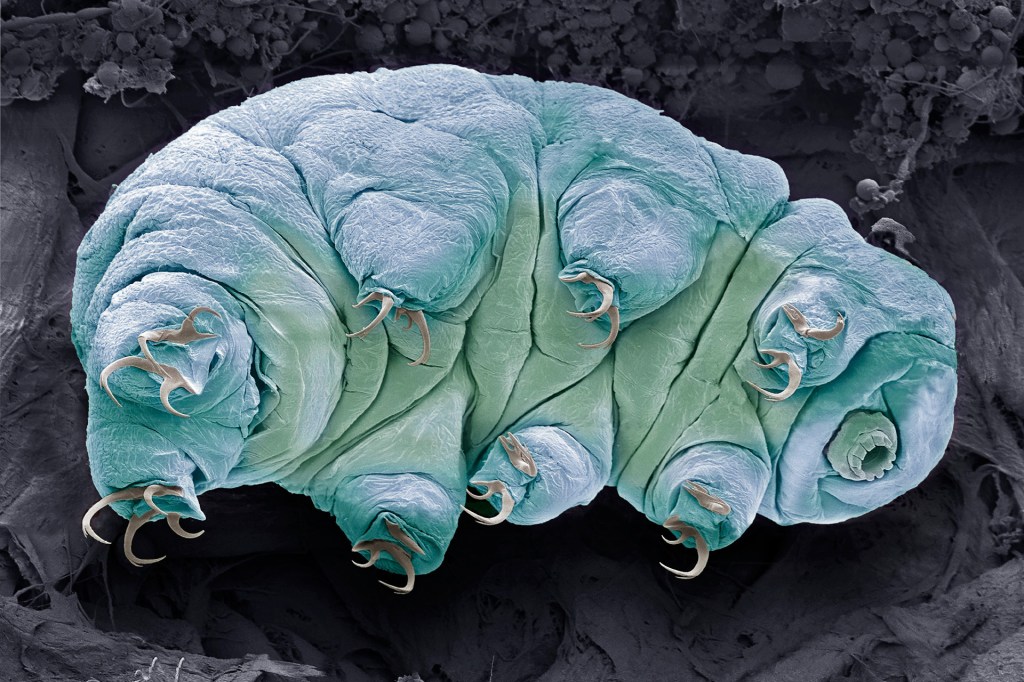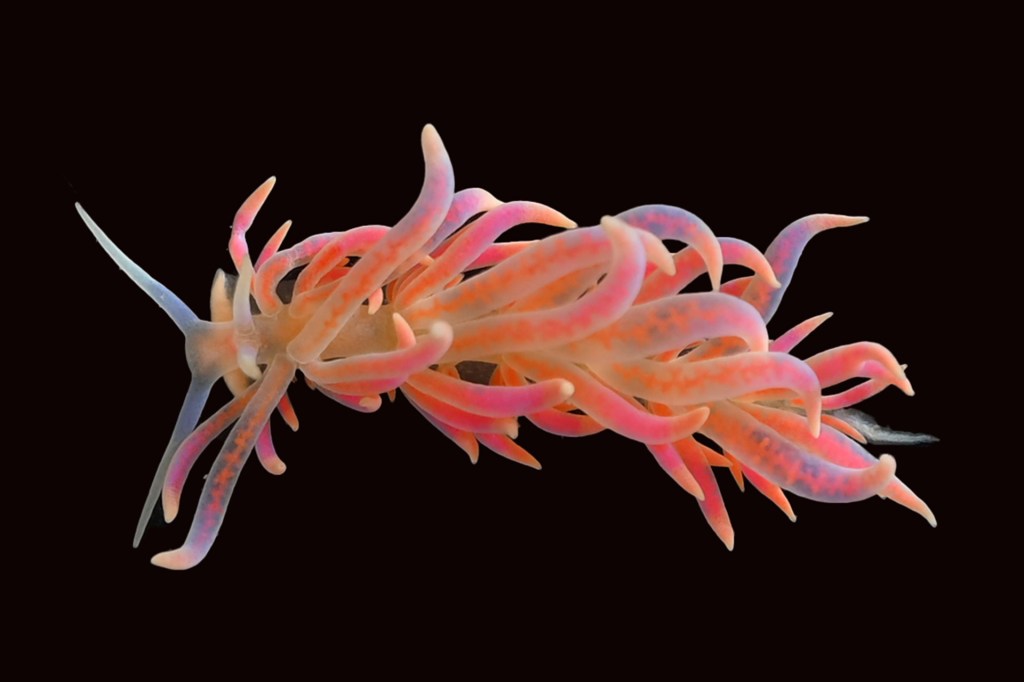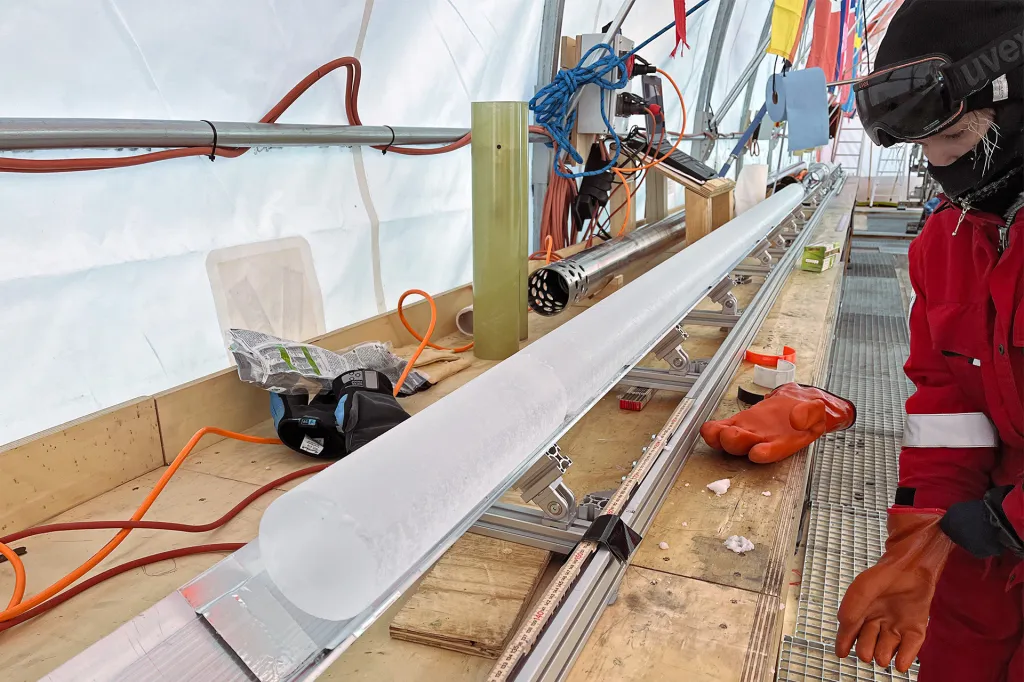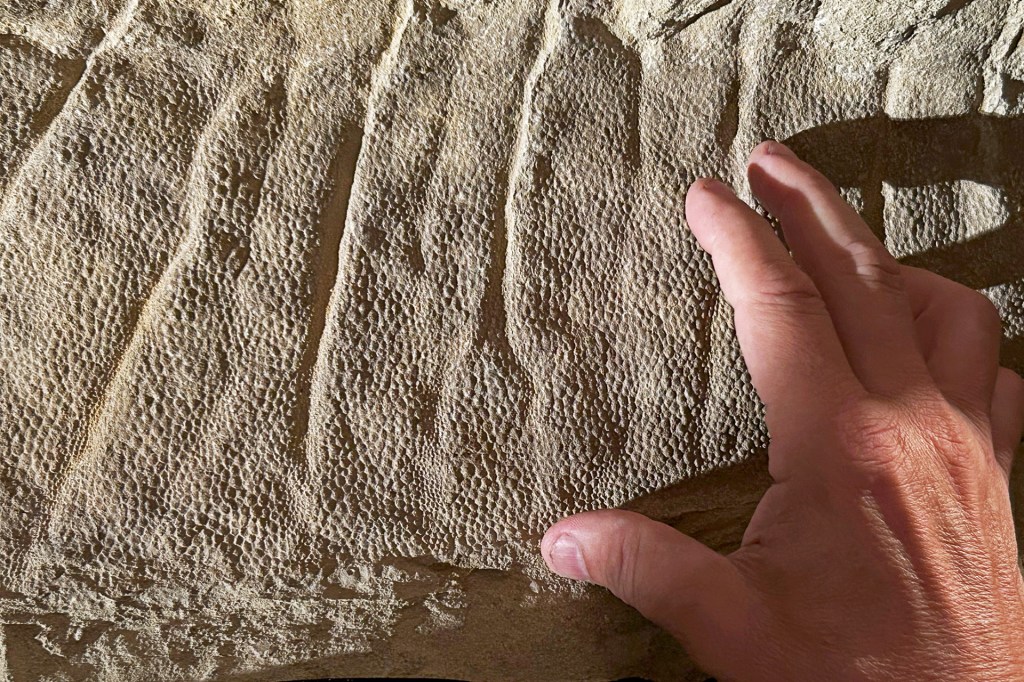
Last year, NASA sent a supply craft to the International Space Station (ISS). Its cargo included thousands of tardigrades. These creatures, each small enough to fit on the tip of a pencil, can be found just about anywhere: in oceans, trees, and probably your backyard. They can live for decades without food or water. Scientists say some tardigrades would continue to exist even if most other life-forms on Earth were wiped out by an asteroid or supernova.
Tardigrades are survivors. That makes them well suited for space travel. Some can take about a thousand times the amount of radiation
radiation
 K-KING MEDIA CO. LTD/GETTY IMAGES
energy that is produced in the form of waves
(noun)
Radiation from the sun can burn you skin.
that would kill a human. Unlocking their survival secrets is key if we hope to send people to Mars someday. “If we can learn the tricks that tardigrades use to protect themselves,” molecular biologist Thomas Boothby says, “we could develop therapies or technologies that could protect humans.”
K-KING MEDIA CO. LTD/GETTY IMAGES
energy that is produced in the form of waves
(noun)
Radiation from the sun can burn you skin.
that would kill a human. Unlocking their survival secrets is key if we hope to send people to Mars someday. “If we can learn the tricks that tardigrades use to protect themselves,” molecular biologist Thomas Boothby says, “we could develop therapies or technologies that could protect humans.”
Danger Blockers
The tardigrades on the ISS came from Boothby’s lab at the University of Wyoming. Previous experiments exposed tardigrades to big doses of radiation. Boothby wants to find out how they respond to low doses of radiation over a long period. That’s the kind of exposure people living in space would get.
One way tardigrades protect themselves is by entering what’s called a tun state. This adaptation lets them survive in places such as moss that dries out many times a year. Tardigrades dry up too. They curl up into tuns, or little balls, producing substances that protect their cells from damage. Their metabolism
metabolism
 JOHN GIUSTINA—GETTY IMAGES
the chemical process in the body that uses food to produce energy
(noun)
Exercise can speed up the metabolism, so you're hungry more often.
shuts down. They “essentially cease to live,” Boothby says. “And they can stay like that for years or even decades.” When water returns, tardigrades puff back up and spring to life.
JOHN GIUSTINA—GETTY IMAGES
the chemical process in the body that uses food to produce energy
(noun)
Exercise can speed up the metabolism, so you're hungry more often.
shuts down. They “essentially cease to live,” Boothby says. “And they can stay like that for years or even decades.” When water returns, tardigrades puff back up and spring to life.
Chemicals that tardigrades produce also protect them from sunlight. Radiation creates charged particles called ions in the body’s cells. Ions pull the cells’ material apart. But a tardigrade’s body can lock up these particles, which keeps them from interacting with cells.
With this knowledge, scientists could develop dietary supplements that boost protective chemicals in astronauts’ bodies. This might fend off the effects of radiation.
There’s still lots of research to be done. “Right now, we’re in the learning phase,” Boothby says, adding that other scientists will build on his research. “That’s just the way science works.”













